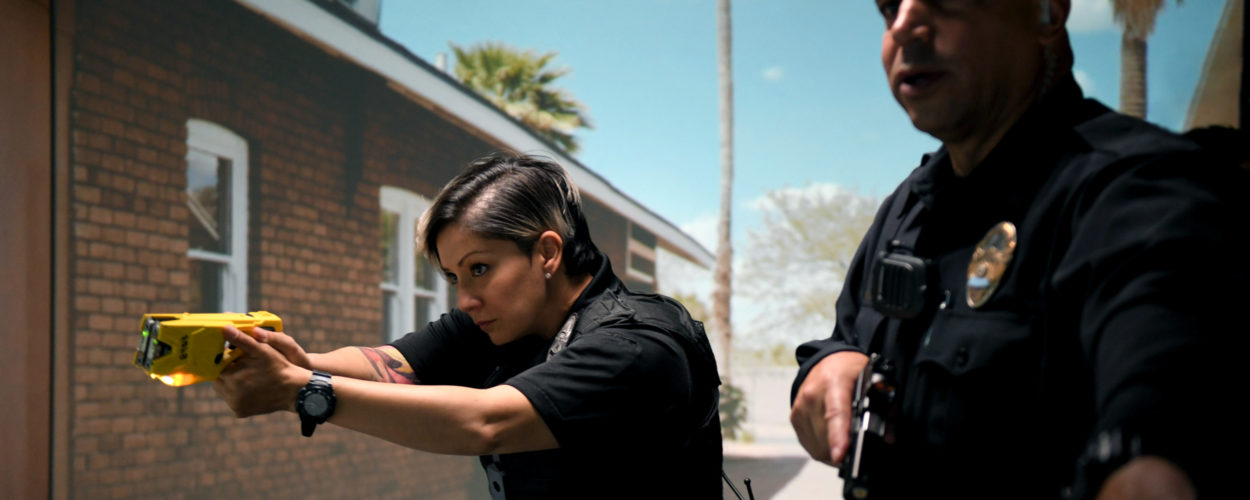
Beginning at the academy, every law enforcement officer is taught the principle of autogenic breathing, which is also known as combat or box breathing. Simply put, this principle is gaining control of your breathing—breathing in for a count of three, holding for a count of three, exhaling for a count of three, then repeating.
Officers are taught to breathe in this manner to gain control of their nervous system, calm their heart rate and bring arousal levels down—making it a crucial, potentially life-saving skill for stressful situations. Keeping a level head in difficult circumstances is no easy feat, but is made easier through principles such as this.
However, when you learned this skill, was it ever integrated into actual roleplay, a simulator environment or the range? Or was it taught in the classroom and left at that?
Reinforce Training
VirTra strongly believes in training like you fight, which means practicing skills and principles in context. While it is a good idea to begin use of force training in the classroom, instructors must reinforce use of force training by practicing in a realistic situation. Trainees must become familiar with the skill and the circumstances in which it should be used.
For example, instructors can use VirTra’s V-300® simulator. Upon stepping inside, trainees are immersed in a real-life scenario and must learn how to best control the situation. The moment the trainee or officer reaches for an Axon® TASER®, baton, less lethal or firearm, they should consciously activate autogenic breathing to keep control of their body’s physiological responses and maintain a level head throughout the situation.
Making Skills Second Nature
By teaching this principle in the classroom then integrating it into the simulator, the skill becomes more natural. Once the trainee is in a psychologically-similar situation in the field, beginning autogenic breathing becomes second nature. By associating the action of reaching for an accessory or firearm with the activation of the breathing technique, the more automatic it becomes.
For instructors, this is an easy way to maximize your department’s training simulator. It does not add extra time or require extensive planning to practice principles and skills – such as autogenic breathing – into the various scenarios. This small implementation can have a huge effect on an officer’s performance when in the field. Learn more about how real-life simulators can benefit your department’s training by speaking with a VirTra specialist.
Recently Published
Join Our Newsletter







